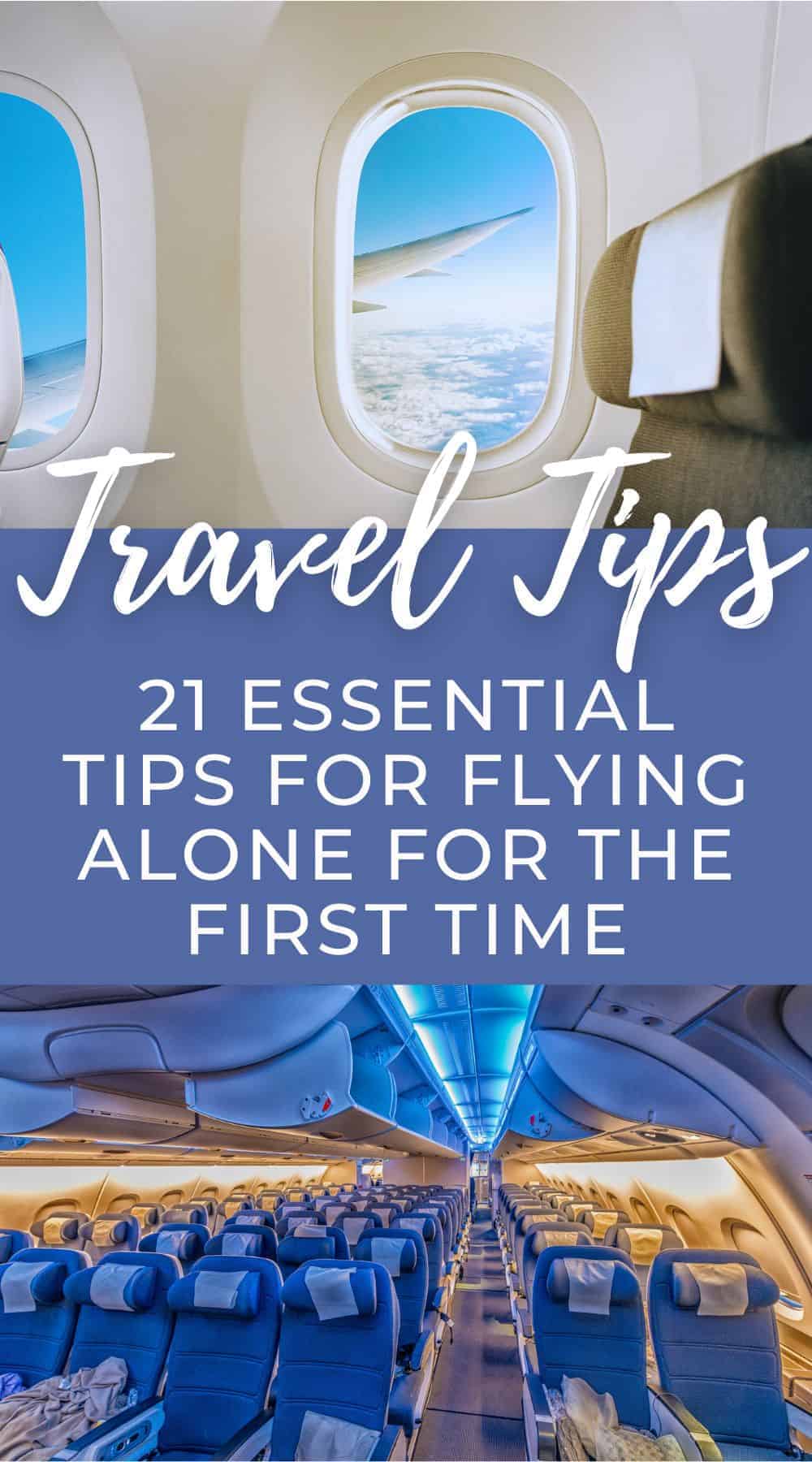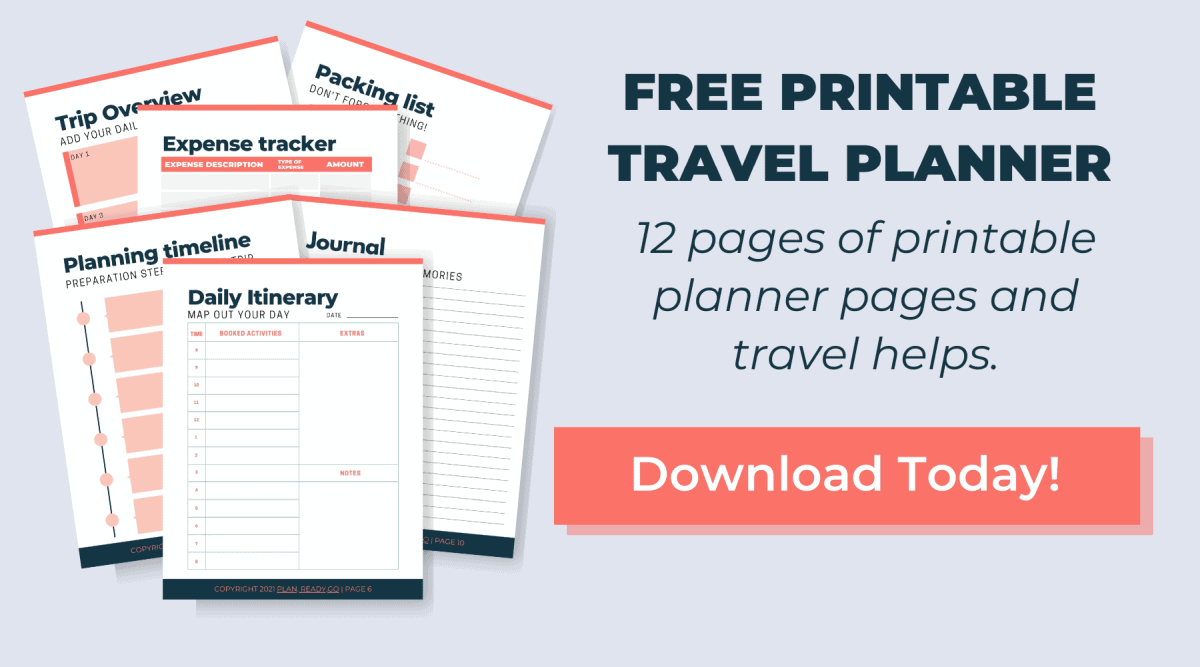21 Essential Tips for Flying Alone for the First Time
Flying solo for the first time? No sweat. This article is packed with my top tips for flying alone for the first time. My straightforward advice will help you cruise through the airport and enjoy your flight. The better prepared you are mentally for your airport and flight experience, the better you’ll be able to deal with any anxiety on the day of your flight and any travel interruptions or inconveniences that come up.
Key takeaways
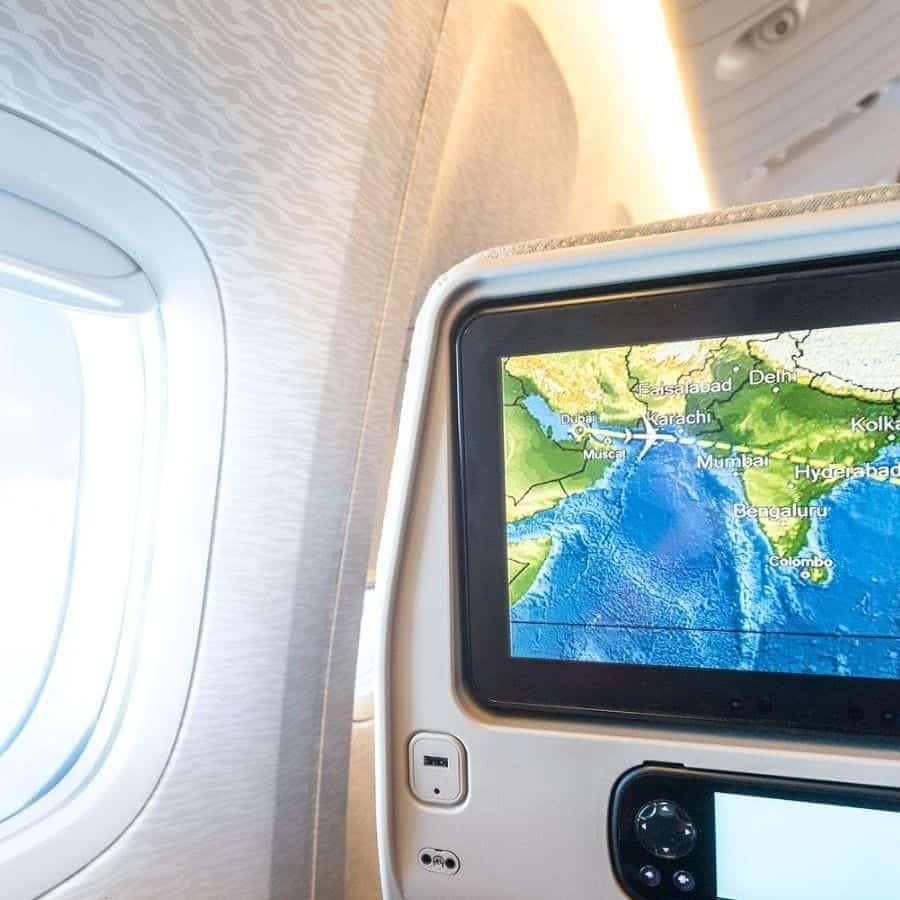
This post includes affiliate links. If you make a purchase through one of these links, I may earn a small commission at no additional cost to you. As an Amazon Associate, I earn from qualifying purchases. See disclaimer.
Take the first flight of the day
This one is a good tip for everybody…consider booking the very first flight out in the morning. It might require an early wake-up, but your early morning flight is less likely to be delayed from the domino effect of backed-up flights from earlier in the day.
In addition, airports are typically less crowded early in the morning, and the lines at security checks are shorter, meaning a smoother start to your solo trip.
As a bonus, early flights also mean you’ll arrive at your destination with more time to find your way around your destination in daylight.
PRO TIP: If you have flexible travel dates you need to check out Going (formerly Scott’s Cheap Flights). You get amazing flight deals sent straight to your inbox with instructions on how to book directly with the airlines. Check out Going here. Going is my favorite way to find great travel deals.
Avoid arriving at your destination after dark
When possible, I recommend trying to book flights that land during daylight hours. Navigating a new city can be challenging, and you’ll find your way around more easily with daylight.
There’s also safety to consider. Getting to your accommodation is generally safer during the day, especially for a woman traveling alone. During daylight hours you’ll more likely find help if you need it, and there will be more people around, which can be reassuring.
Use your airline’s app
Download your airline’s app before heading to the airport. It’s a digital central hub designed to help you throughout your trip. Airline apps typically offer features like:
- The ability to check in for your flight.
- Keep your digital boarding pass on your phone for convenience.
- Receive real-time notifications on gate changes, delays, and boarding times.
Some airline apps will even provide information on where your flight’s plane is coming from so you can see if that flight left on time and will arrive at your gate on time for your flight. Or maybe that’s a bit more obsessive than you want to be?
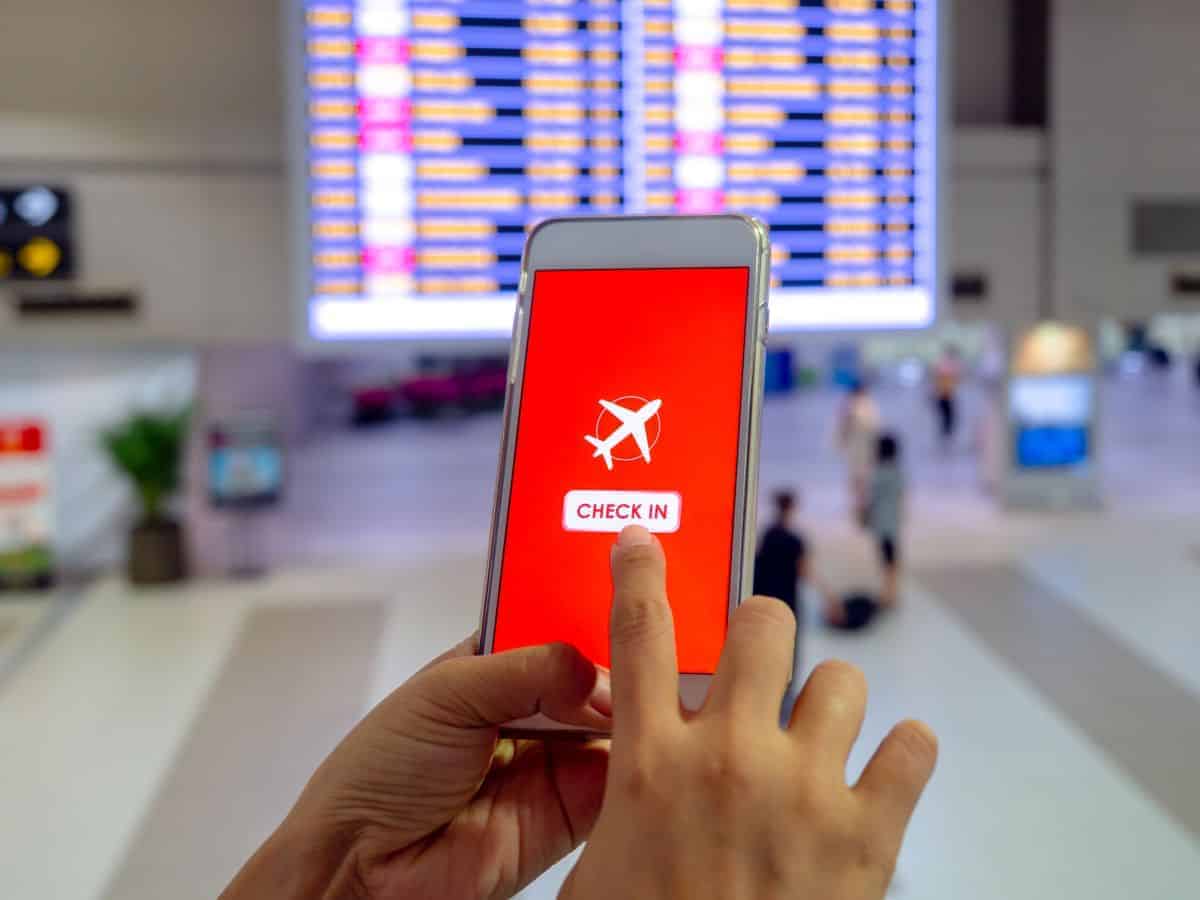
Packing tips
Packing well can make your first solo flight more comfortable and less stressful.
Follow your airline’s carry-on policies
Every airline has specific carry-on restrictions related to the size and weight of your luggage. Be sure to check your airline’s website for these details before you pack. Typically, you’re allowed one carry-on bag and a personal item such as a purse, small backpack, or a laptop bag.
Pack light to simplify your time at the airport
When traveling alone, aim to pack light:
- Maybe use packing cubes to organize your belongings and maximize the space in your suitcase.
- Avoid overpacking by bringing versatile clothing that can be mixed and matched.
- Carrying less with you will make getting around at the airport and your destination easier.
- Remember, when you’re flying alone you’ll have to keep all your belongings with you at all times including waiting in line for food and going into the restroom. Make things easier on yourself by packing lighter.
Make sure you understand TSA guidelines to avoid additional screening
The United States Transportation Security Administration (TSA) has clear guidelines on what you can bring through security at the airport and onto a plane:
- All liquids packed in your carry-on luggage must be in containers of 3.4 ounces or less and placed in a clear, quart-sized bag.
- Electronics larger than a cell phone should be easily accessible, as you’ll need to place them in a separate bin during security screening.
- Apply for TSA PreCheck or Global Entry to simplify things at security and get through screening faster.
Check in online ahead of time
When preparing for your solo flight, online check-in is a key step. It saves you time at the airport and can also help you with your boarding and seating depending on the airline and fare class you purchased. Most airlines open online check-in 24 hours before departure. Your airline will have information online about how to check in.
Make sure you save your mobile boarding pass to your phone wallet so that any potential connectivity issues won’t prevent you from having your boarding pass ready. For extra measure, you could print out a paper copy and have that with you just in case you need it.
TIP: Keep track of all of your important travel details with a digital travel planner like this.
Follow the airport’s guidelines for the timing of arriving at the airport ahead of your flight
To help you have a less stressful experience when you’re flying alone for the first time, I recommend you follow the airport’s guidelines regarding when to arrive before your flight. Airlines and airports have specific recommendations that can vary. Below are general guidelines to help you plan:
- Domestic Flights: Aim to be at the airport two hours before your scheduled departure. This gives you ample time to check in, pass security, and find your gate.
- International Flights: It’s wise to arrive at least three hours before your flight takes off. This additional time accounts for extra security measures and potential customs procedures.
Remember, these are general tips. Always check with your airline and/or airport for any specific instructions, as suggested arrival times can vary especially during peak seasons, major holidays, at cities hosting major events, or at larger airports. Don’t be afraid to get to the airport early. It’s better to be bored than stressed.
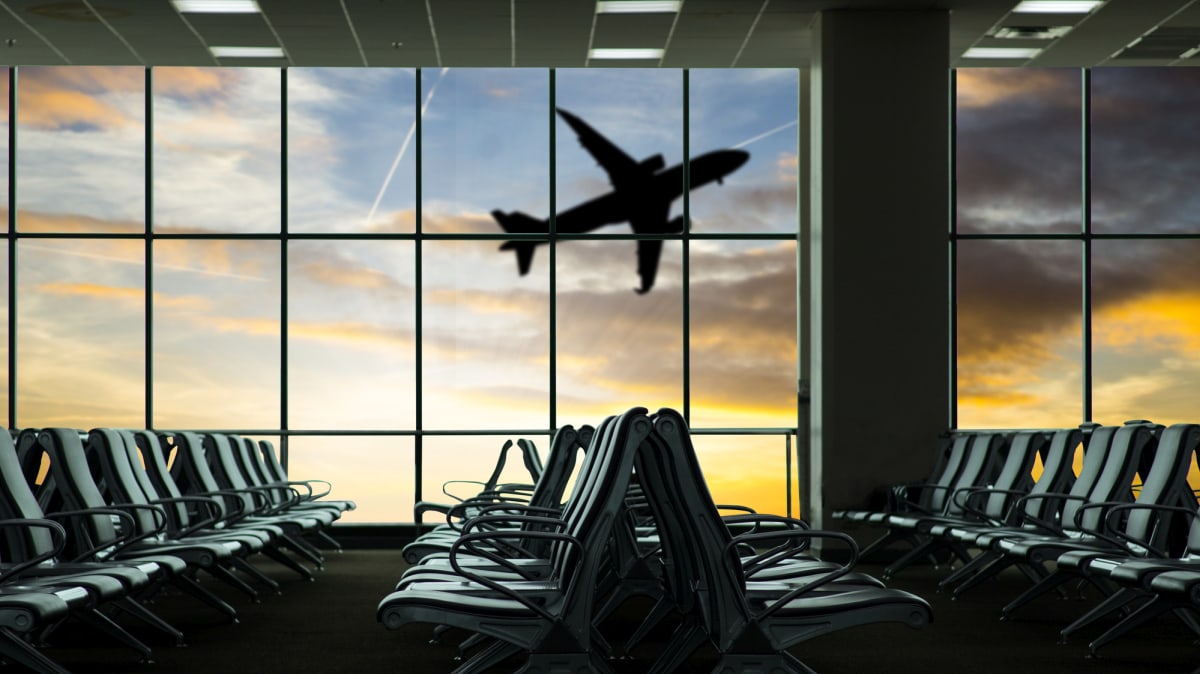
Have a backup plan in case of major delays or canceled connecting flights
If you’re faced with a major delay or a canceled connecting flight, having a backup plan can turn a stressful situation into a manageable one.
- Sign up for airline notifications to get real-time updates on your flight status. This could include allowing push notifications from your airline’s mobile app.
- Familiarize yourself with the airline’s policy on delays and cancellations.
- Immediately contact airline staff for help rebooking or finding accommodation. I prefer to get on the phone with the airline immediately while I wait in line to talk with a gate agent for additional assistance if needed.
Essential steps to take:
- Keep a list of essential airline contact numbers on your phone.
- Print out or save a digital copy of your itinerary.
- Have all of your reservation confirmation numbers handy for your hotel and rental car reservations. You will need to reference them if you need to modify your reservations.
If you have trip delay or cancellation coverage, make sure to get a common carrier statement from the airline about the reason for the flight’s delay or cancellation. You will need to provide this at the time you file your claim.
Pro tip: Keep track of all of your important travel details with a digital travel planner like this.
Stay calm, and don’t hesitate to ask for assistance—airport staff are there to help navigate you through these unexpected changes. Canceled flights are unpleasant to deal with but they happen from time to time. If it happens to you, think of it as a rite of passage as a traveler.
If you get stuck overnight in an unfamiliar city by yourself, make sure to find someplace safe to stay for the night. Most major airports have many hotels nearby to choose from with free airport shuttle service, and you can even find hotels at some airports so that you don’t have to take a shuttle.
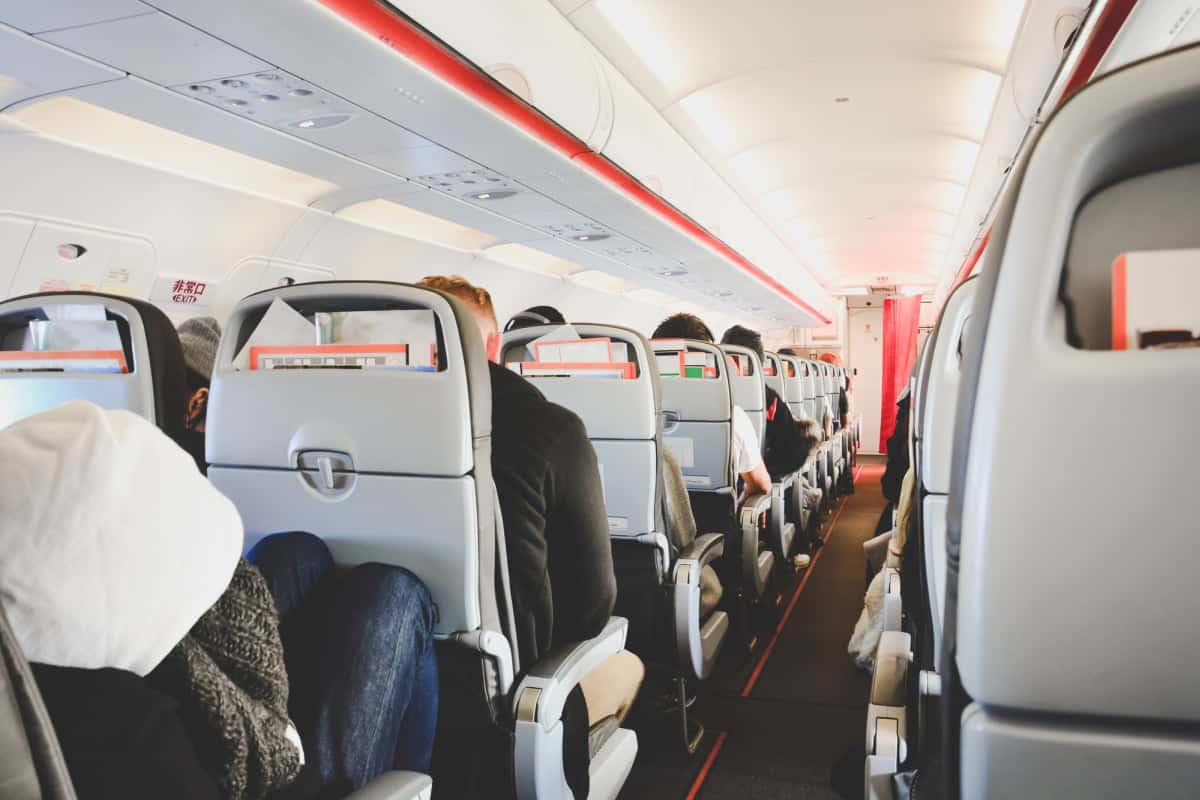
On the day of your trip
Know your boarding group and seat
Each airline has a different way of boarding passengers, but they all tend to follow the same general pattern. Your boarding group will be listed on your boarding pass, and you don’t need to line up at the gate area until your boarding group is called. Do not attempt to board the plane before your boarding group is called.
Familiarize yourself with the layout of the plane and your seat location before boarding. This will save you time. If you’re unsure about where your seat is though, don’t hesitate to ask a flight attendant to direct you to your seat.
Once you find your seat, stow your carry-on luggage and personal item quickly and take your seat so the aisle is clear for those boarding behind you. Your fellow passengers will thank you.
Avoid excess caffeine and sugar on your travel day
Limit your intake of caffeine and sugary snacks on flight days. A balanced meal can help maintain your energy levels without the subsequent crash. Minimizing caffeine will help you get some sleep on your flight.
Fully charge all devices
Before leaving for your trip, charge all your electronic devices. This includes your phone, laptop, and tablet or e-reader.
When traveling alone it’s essential to be able to communicate if needed. And you’ll want plenty of entertainment options to keep yourself occupied through a long flight.
Have a long airport layover? Check out my ideas for how to make use of your airport waiting time.
Travel with a portable charger
Carrying a portable charger is a travel essential to keep your devices powered, especially during long flights or unexpected delays. Make sure the battery capacity is enough for your needs.
Travel with a small notebook and a pencil
A small notebook and pencil packed in your carry-on can be invaluable for jotting down important information, such as confirmation numbers or directions. It’s a low-tech backup that won’t fail you. I can’t tell you how many times I’ve been so thankful I have these with me.
Bring a refillable water bottle
Plane air is very drying. Stay hydrated by bringing a refillable water bottle. You can fill it up after passing through the security checkpoint to keep water handy during your flight.
Dress comfortably
Wear comfortable clothing on your flight and dress in layers to adapt to changes in temperature at the airport and on the plane. Comfortable shoes are a must, as you’ll likely be walking through large terminals.
Pay attention to meal times
Plan your meals around your flight schedule. If you’ll be in the air during usual meal times, eat beforehand or bring a meal or snacks on board.
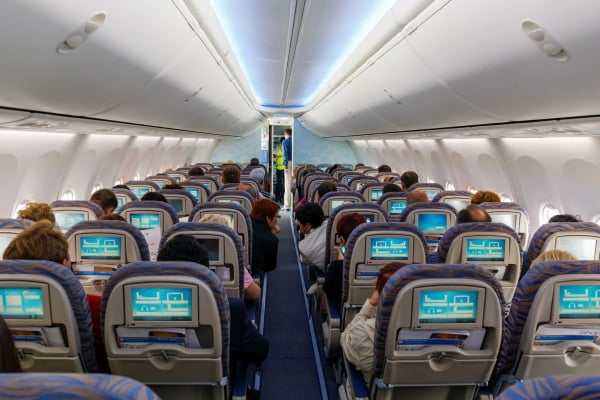
During your flight
Bring plenty of entertainment to occupy you
Make sure you have a variety of entertainment options to help you pass the time during your long flight alone. Load your electronic devices with movies, music, podcasts, and ebooks. Don’t forget to pack your headphones and chargers.
A physical book or magazine can be a refreshing break from screen time. You can see my recommended airplane books for some great options.
Try to get some sleep if it’s a longer flight
Getting sleep on a long-haul flight helps combat jet lag and can help you feel more refreshed upon landing. You can use a travel pillow, eye mask, earplugs, or noise-canceling headphones among other products to help you sleep on your flight.
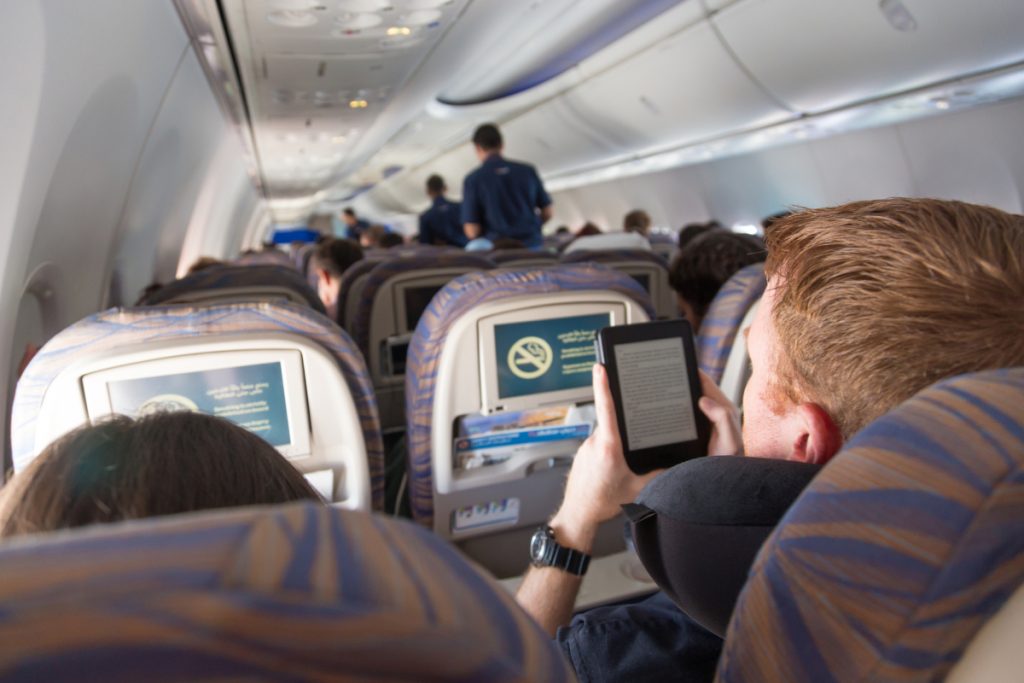
After you land
Landing in a new place, whether for a personal adventure or business, can be a little scary for those flying alone for the first time. Have a clear plan for the rest of your day and how you’ll reach your accommodation.
Know how you’re going to spend the rest of your day
Once you’ve deplaned and picked up any checked luggage, take a moment to breathe and review your itinerary so you know exactly where to go next. Whether you have attractions to visit or simply need to check into your hotel and relax, having a plan will help you reduce stress.
Plan for getting from the airport to your accommodations
Knowing in advance how you’ll get from the airport to your accommodation is a great idea. Keep a copy of your accommodation’s address within easy reach.
- If you’re renting a car, it’s wise to book in advance and keep all the paperwork you need on hand to avoid delays at the rental desk. You can also check in advance to find out where the rental car pick-up is and where to catch the shuttle.
- If not renting a car, consider a taxi or a rideshare option to get you to your hotel or vacation rental. Most airports have a designated area for these services, and you can typically find clear signage directing you there.
Final thoughts on your first time flying alone
Getting ready for your first solo flight can be a mix of excitement and nerves. While the tips in this article will help you handle the airport and flight, it’s important to stay flexible and open-minded. Keep things organized, roll with any unexpected twists, and you’ll ace flying alone. And who knows? Maybe you’ll prefer it!
More articles to help you with your flight
- How to dress comfortably for your next flight
- How to survive long flights in economy
- The best products to help you sleep on your flights
- Choosing the best personal item bag for you
- The best airplane books
- What to pack for your flight
- How to pack your toiletries for your carry-on
- How to use Google Flights to save money
Pin this post!
